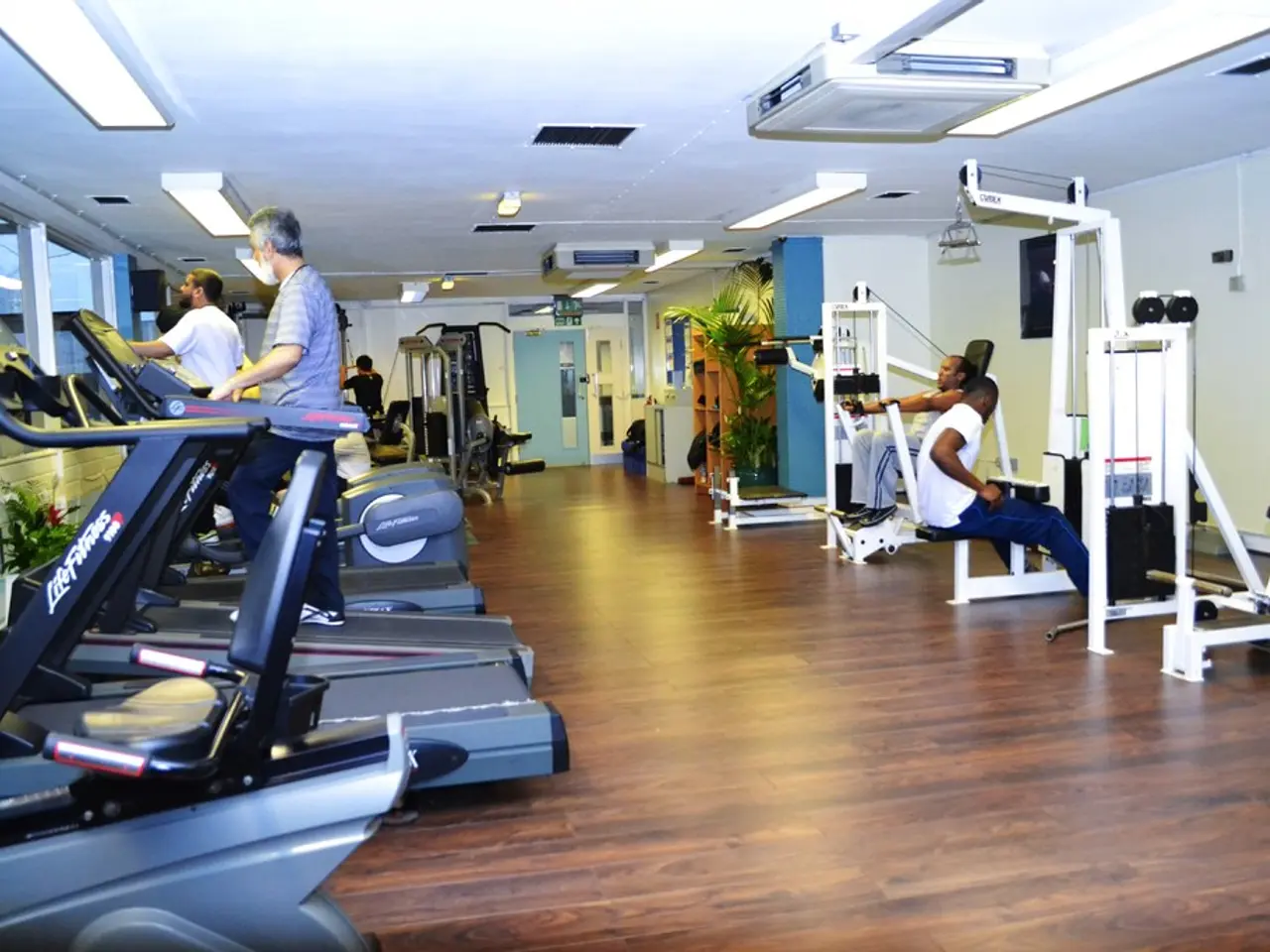Weekly Pilates Practice Over the Past Year Enhances Health and Wellbeing
In the hustle and bustle of a 9-to-5 desk job, finding time for physical well-being can be a challenge. However, one individual has found solace in the practice of Pilates, a method that has not only improved their core strength but also alleviated the tight hips and stiff upper back that come with long hours behind a screen.
After a year of dedicated practice, this individual considers themselves a fully-fledged Pilates convert. The benefits they've experienced are numerous, from enhanced core strength to improved posture and increased flexibility.
Pilates is more than just a workout; it's a practice that requires focus and dedication. Initially, it may feel foreign, but with persistence, long-term benefits are achievable. Whether it's in-person classes or at-home sessions, Pilates doesn't demand a lot of time. Classes typically last between 50 minutes to an hour, while at-home practices never exceed 20 minutes.
The individual's Pilates journey began with Mat Pilates, exercises performed on a mat using one's own body weight for resistance. This form of Pilates focuses on core strength, balance, stability, and posture through repetitive, low-impact movements. As their skills improved, they ventured into Reformer Pilates, a practice that uses a specialized machine with adjustable resistance.
The Reformer, with its sliding platform and springs, offers a wider range of exercises, from sitting and standing to lying down. This equipment allows for customizable intensity levels and precise resistance training, making it suitable for strength, alignment, and rehabilitation goals.
Pilates offers more than just physical benefits. It promotes mental well-being by reducing stress and increasing body awareness. The individual finds the Pilates Hundred and planks more manageable now compared to before, a testament to the practice's stress-reducing effects.
There are more than one type of Pilates, each with its unique characteristics. Classical Pilates adheres closely to the original teachings and exercises developed by Joseph Pilates. Contemporary Pilates, on the other hand, incorporates modern fitness principles and may include additional equipment like stability balls and resistance bands.
For those seeking injury rehabilitation, Clinical Pilates might be the best choice. This form of Pilates is often tailored to individual needs and is often prescribed by health professionals.
Whether you're a beginner or an advanced practitioner, Pilates can be started with just a mat. For those seeking a more challenging workout, there are professional-grade Reformers available that offer enhanced functionality and durability.
In sum, Mat Pilates emphasizes bodyweight control and foundational strength, while Reformer Pilates adds versatile mechanical resistance for advanced strengthening, alignment, and rehabilitation exercises. Both forms aim to improve core stability, posture, flexibility, and overall body conditioning with slightly different approaches and tools.
So, whether you're looking to improve your physical and mental well-being, or simply seeking a new challenge, consider embarking on your own Pilates journey. With focus and dedication, the benefits are truly transformative.
[1] Pilates Method Alliance. (n.d.). Pilates. Retrieved from https://pilatesmethodalliance.org/pilates/
[2] American Council on Exercise. (n.d.). Pilates. Retrieved from https://www.acefitness.org/education-and-resources/lifestyle/blog/6833/what-is-pilates/
[3] Balanced Body. (n.d.). Reformer Springs. Retrieved from https://www.balancedbody.com/pilates-products/reformer-springs
[4] Stott Pilates. (n.d.). Reformer. Retrieved from https://www.stottpilates.com/equipment/reformer
[5] Polestar Pilates. (n.d.). Reformer. Retrieved from https://www.polestarpilates.com/equipment/reformer/
- The individual, having spent a year dedicated to Pilates, has discovered a newfound fitness, flexibility, and wellness, as well as improvement in core strength and posture.
- Science-backed fitness-and-exercise programs, like Pilates, promote not only physical well-being but also mental wellness, helping to alleviate stress and increase body awareness.
- In addition to traditional Mat Pilates exercises, individuals can also opt for Reformer Pilates, which utilizes specialized machinery like sliding platforms and springs for personalized strength training, alignment, and rehabilitation exercises.
- The practice of Pilates, whether it's Classical, Contemporary, Clinical, or at-home, can be tailored to individual needs, offering a supportive health-and-wellness alternative for beginners and advanced practitioners alike, assisting in numerous aspects of physical and mental well-being.




